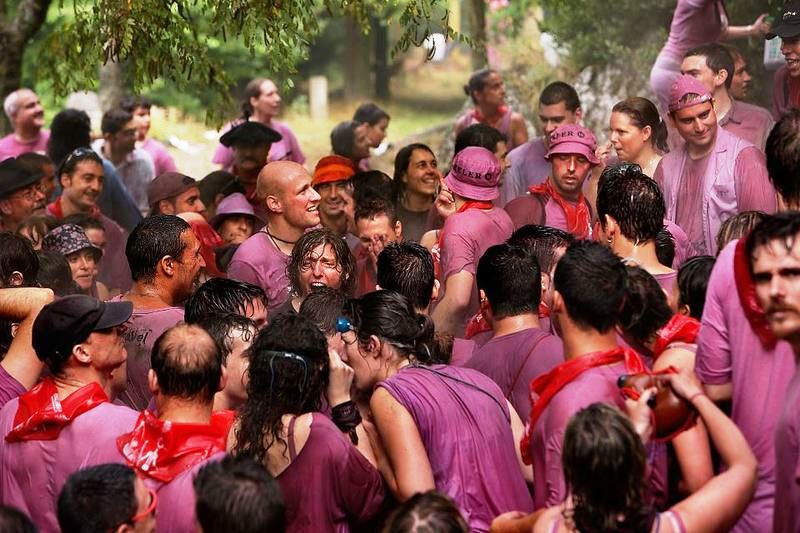Being new to wine culture and the art of tasting may make you feel like you’re jumping into an intimidating mixture of snobby know-it-alls and eclectic vocabulary. But here at WineCollective headquarters we know that different levels of wine education exist. Our team ranges from certified vino pros to the earliest of beginners – like me.
In the next few weeks our WineCollective blog will be featuring a “Welcome to Wine” series of posts that will go through all beginner basics, including terminology and various tips to help you learn. After all, our club is open not only to connoisseurs and collectors, but all Canadians wanting to share in the joys of wine.
My interest in wine began early, where a glass (or two) of my father’s homemade wine at the family dinner table was always necessary and would lead us through hours of conversation and laughs. Today, my interest has spread to curiosity in all features of the wine industry that I hope to explore. So whether you just want to socialize and share wine with food and friends or have a thirst for knowledge, here is a delicious place to start.


We will begin with, tasting basics.
There are three steps to getting the most out of your wine tasting experience that will require you to indulge your senses of sight, smell and taste. While reading up on technique and a “systematic approach” will give you foundation in wine education, you’ll probably find that, like most things, practice makes perfect. So feel free to pop a cork and follow along.
Step 1 – Eyes
The best way to peek into the inside of your glass is to slightly tilt its delicious contents, preferably up to a blank canvas like a white tablecloth. Here you can look into not only the colour, but the clarity and legs as well (yes, wine has legs).
Red, white and rose wines all have a range of colour they can fit into determined by grape varieties, how the wine was aged and the overall age of the wine. These can all have an effect on how the wine appears. My Wine Tutor says that whites gain colour in the aging process, while reds lose colour.
Here is a spectrum of hues to look for as you tilt your glass:
White: straw-yellow / yellow-gold / gold / old-gold / yellow-brown
Red: purple / ruby / red / brick red / red-brown / tawny
Rose: pink / salmon / orange
You also want to make note of the intensity of your wine colour as well as the clarity – is your wine clear or hazy?
The legs of your wine can be seen as a clear film against the sides of the glass, which can indicate the alcohol content and body.
Step 2 – Nose
Swirling your glass as part of wine tasting is essential and powerful. Not only does the motion aerate the wine and release a bouquet of aromatic appeal, it also makes you look and feel extremely fancy. Or at least, I think so.
Aroma characteristics can coincide with varieties used. Learning the smells of more popular wines can help you match with your own experience. However, everyone is different; what you smell may be different from what someone else might take away from the wine.
White
Chardonnay: Melons, pears, vanilla, hazelnut
Sauvignon Blanc: Grapefruit, gooseberries, tart apples, lime or lemon
Riesling: Apple, pear, peach, honey, flowers
Red
Pinot Noir: Cherries, strawberries, forest floor
Merlot: Blueberry, plum, tobacco, chocolate
Cabernet Sauvignon: Black currant, black cherry, smoke, cigar box
Winesworld’s Magazine gives a long list of favourite wines and their individuality.
“Accept what life offers you and try to drink from every cup. All wines should be tasted; some should only be sipped, but with others, drink the whole bottle.” – Paulo Coelho
Step 3 – Mouth
Finally, you get to taste. But don’t rush and don’t gulp it up. Instead, savour the flavour that the last two steps were piecing together. Taste buds and sensations are everywhere. Try to pull apart the components that make up the wine: sweetness, acidity and tannin (bitterness).
Flavour characteristics can coincide with aroma. Fruit and floral (like citrus and tropical) as well as spice, vegetables, and oak can all be explored within a wine glass.
What do you taste? Is the body of the wine heavy and rich, or light? Does it match with your meal? These are all questions to ask to ask to help you decide if the bottle is one you enjoy.
The last element of wine tasting to notice is the balance and length of your sip. A long finish leaves the taste of the wine and its components in your mouth. With time, you may be able to pinpoint which flavours hold.
WineCollective is an excellent place to start in your wine journey. Not only do we test and rate wines within our office, we also send you a variety of unique wines to expand your palette.
Along with the bottles, Tasting Cards are sent to members to share the vintage with highlighted tasting notes – Eyes, Nose, Mouth. We also include information on the vineyard, region and producer to add to every aspect of your wine education.

Tasting Cards can also throw an extra challenge with every card’s food pairing suggestion. Attempt a recipe to go along with the wine to see how flavours of food and wine can flawlessly marry.
Although wine tasting may have its science, the experience is entirely individual. Being aware and knowledgeable will not only help to impress your friends, but will also help bring you to find your palette and wine preferences. Happy tasting!
 grape varieties exist, each having their own characteristics, aromas and flavour.
grape varieties exist, each having their own characteristics, aromas and flavour.






























